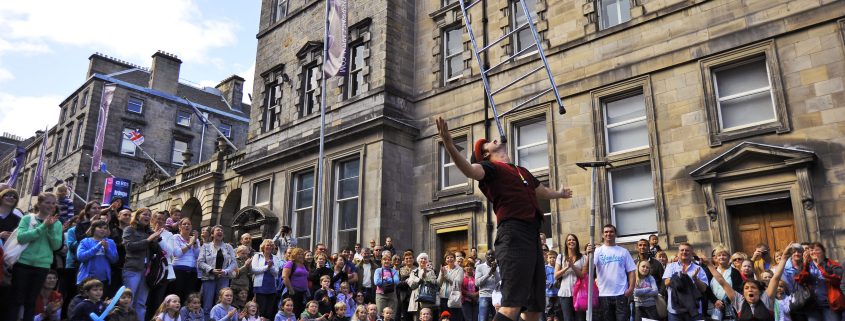Comic Relief: The price to perform at Festival Fringe is a joke

The Edinburgh Festival Fringe — my New York Fashion Week. For the month of August, both established and aspiring creatives travel to Scotland to share their newest works.
The Fringe hosts all performing art mediums. From operas to circus acts, it’s available at the Fringe.
However, the biggest section, and the part that I, respectfully, actually care about is the comedy section. Over 40% of the festival is comprised of comedy acts, and the Fringe is celebrated as one of the top comedy festivals in the world.
Analyzing the lineup at the festival is similar to analyzing the trends of fashion week. Those achieving success in Edinburgh are the same people that will be on every panel show and earn HBO stand-up specials.
This is especially true for the coveted recipients of Dave’s Edinburgh Comedy Awards (which are sponsored by the British television channel, Dave).
Winning one of the awards is a sure-fire way to get the attention of producers. The most coveted is the Best Comedy Show prize. At the last festival, Rose Matafeo took home the prize and since has shot into international stardom, even creating her own HBO show “Starstruck.”
The Best Newcomer Award reaps similar benefits. In the same year as Matafeo, Catherine Cohen was honored with the award for her show “Catherine Cohen: The Twist …? She’s Gorgeous” which was transformed into her own Netflix special.
There is also the Panel Prize, more commonly referred to as the Spirit of the Fringe, which is awarded to people or groups who make major contributions to the genre of comedy, especially when provided with little funding. Past recipients include Iraq Out & Loud — a performance piece that involved a 24/7 reading of the Chilcot Report which details the U.K.’s involvement in the Iraq War.
The power of the festival cannot be underestimated. However, achieving the Edinburgh dream is becoming less accessible every year.
For established performers, the festival simply acts as a victory lap. Popular U.K.-based stand-up comedian Nish Kumar performed a week of shows for a venue of 500 people.
Kumar’s Fringe experience wasn’t always a walk in the park — when he first started performing at the Fringe, he was losing money endlessly. It did not matter if he sold out every show he performed — the cost of putting on a show, which for him was £10,000, was too great.
Most performers simply can’t afford to take the risks Kumar did, even if they so desired.
The production of a solo show is estimated to be around £6,000-£10,000. This number does not take into account travel, lodging, food and other living expenses.
Free Fringe is also an option — the program provides the venue for the performer which alleviates a large financial burden, but there’s a catch. The performer must also perform for free. The Free Fringe is also selective, unlike the regular Fringe where any person can put on a show. Even if a person were to be selected, putting on free shows for a month is simply not an accessible option.
The rising prices of performing at the Fringe have come under fire for years, but the conversation escalated at this year’s award ceremony.
The Spirit of the Fringe award for 2022 was presented to Best in Class — a group founded by comedian Sian Davies with the goal of supporting up-and-coming, working-class comedians to perform at the Fringe.
The choice to congratulate a group for its bravery in overcoming the financial barriers of a festival that, as described by awards producer Nica Burns is “open to everyone,” was ironic to say the least. Davies was quick to pick up on this too, using her acceptance speech to call out the “systematic bias” of the festival.
The fight between exploring one’s creative endeavors and paying the bills is nothing new. Without the help of connections or family money, the chances of making it in show business were always slim, but the Fringe was supposed to be the place any person with a dream could go.
So, while I will continue to follow the Fringe every August, I can’t help but mourn all the brilliant acts I will never be able to see simply because they don’t have thousands of dollars of expendable income.
Kimberly Aguirre is a sophomore writing about comedy. She is also the Arts & Entertainment Editor.

